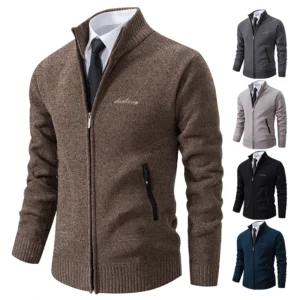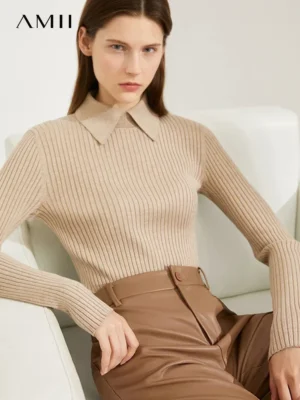Introduction: Understanding the World of Cashmere Options
Few luxury fabrics have captured the imagination and devotion of fashion enthusiasts quite like cashmere. Renowned for its exceptional softness, remarkable warmth, and timeless appeal, cashmere represents the pinnacle of natural fiber luxury. Yet for many consumers, a common dilemma emerges when browsing collections: should you choose chunky, substantial cashmere pieces or opt for their lightweight, delicate counterparts?
This choice isn’t merely about aesthetics—it influences comfort, versatility, and even the longevity of your investment. Each type offers distinct advantages depending on your climate, personal style, and intended use. While chunky cashmere provides unparalleled warmth and cozy texture, lightweight options excel in versatility and layering potential.
In this comprehensive guide, we’ll explore the technical differences, practical applications, and styling possibilities of both cashmere sweaters types. By understanding the unique characteristics of each, you’ll be equipped to make informed decisions when investing in these luxurious pieces that, with proper care, can remain cherished wardrobe staples for years to come.
What makes this comparison particularly fascinating is cashmere’s remarkable thermal efficiency. Compared to regular wool, quality cashmere provides 3-8 times more warmth relative to its weight—a truly exceptional natural insulator that performs differently depending on how it’s processed and knitted.
The Science Behind Cashmere Quality and Weight
To truly understand the differences between chunky and lightweight cashmere, we must first examine the fundamental characteristics that determine quality and performance across all cashmere products.
Premium cashmere begins with exceptional raw materials. Grade A cashmere—the highest quality available—features fibers exceeding 36mm in length and measuring under 16 microns in thickness. These longer, finer fibers create smoother yarns that resist pilling and maintain their luxurious feel through years of wear. Estate Cloth exclusively uses these superior fibers to ensure exceptional performance in every garment.
Several technical specifications determine how cashmere feels and performs:
Ply: This refers to the number of yarns twisted together to create the final thread. Understanding comprehensive guide cashmere yarn weight helps explain why 1-ply or 2-ply constructions create lightweight, fluid fabrics ideal for layering, while 3-ply and higher constructions yield substantial, chunky pieces with superior insulation.
Gauge: The gauge indicates knitting density—specifically, how many stitches appear in a given measurement. Low-gauge knits (3-7) create chunky, textural fabrics with visible stitches and substantial weight. High-gauge knits (12-18) produce fine, smooth fabrics with excellent drape. The relationship between cashmere gauge knit density and wearability is particularly important for understanding how different pieces will perform.
Micron Count: This measures the diameter of individual cashmere fibers. Premium cashmere features fibers under 16 microns, with the finest quality reaching 14-15 microns. Lower micron counts create exceptionally soft fabrics that feel luxurious against the skin.
Fiber Length: Longer fibers (36mm+) can be spun into smoother, stronger yarns that resist pilling and maintain their appearance. Shorter fibers, while less expensive, tend to create yarns that pill more readily and lose their shape over time.
These technical elements directly translate to what we perceive as “chunky” or “lightweight” cashmere. Chunky cashmere typically combines low-gauge knitting with multiple-ply construction, creating substantive fabrics with pronounced textures and excellent thermal properties. Lightweight cashmere uses high-gauge knitting with fewer plies, resulting in fine, fluid fabrics that excel in layering applications while still providing impressive warmth.
Physical Characteristics of Chunky Cashmere
Chunky cashmere makes an immediate impression through its substantial presence and tactile appeal. These pieces are defined by their thickness, weight, and prominent textures that invite both visual appreciation and touch.
Defining Features:
- Substantial Weight: Chunky cashmere typically weighs between 300-600g/m² (approximately 9-18 oz/yd²), creating pieces with noticeable heft and presence
- Pronounced Texture: The low-gauge construction (typically 3-7 gauge) creates visible stitches and textural patterns
- Multiple-Ply Construction: Usually made with 3-ply to 6-ply yarns for maximum warmth and dimension
- Sculptural Silhouettes: The substantial fabric naturally creates more structured, architectural shapes that stand away from the body
- Dramatic Textures: Cashmere cable knit sweaters and other textural patterns are particularly striking in chunky weights
The thermal performance of chunky cashmere is remarkable. The thicker yarns and substantial construction create pockets of warm air within the fabric structure, providing exceptional insulation even in the coldest conditions. This natural insulating property makes chunky cashmere ideal for outerwear pieces and winter staples.
When held, chunky cashmere has an unmistakable quality—substantive yet surprisingly soft, with a comforting weight that signals luxury and protection from the elements. The visual impact is equally impressive, with textural details like cables, ribs, and honeycomb patterns standing out in dramatic relief.
Oversized cashmere sweaters in chunky weights create particularly striking silhouettes, offering both remarkable warmth and bold fashion statements. The substantial nature of chunky cashmere gives these pieces a commanding presence that can anchor an entire outfit.
Despite its weight, quality chunky cashmere maintains a surprising level of flexibility, molding to the body over time while retaining its essential structure and character through proper care.
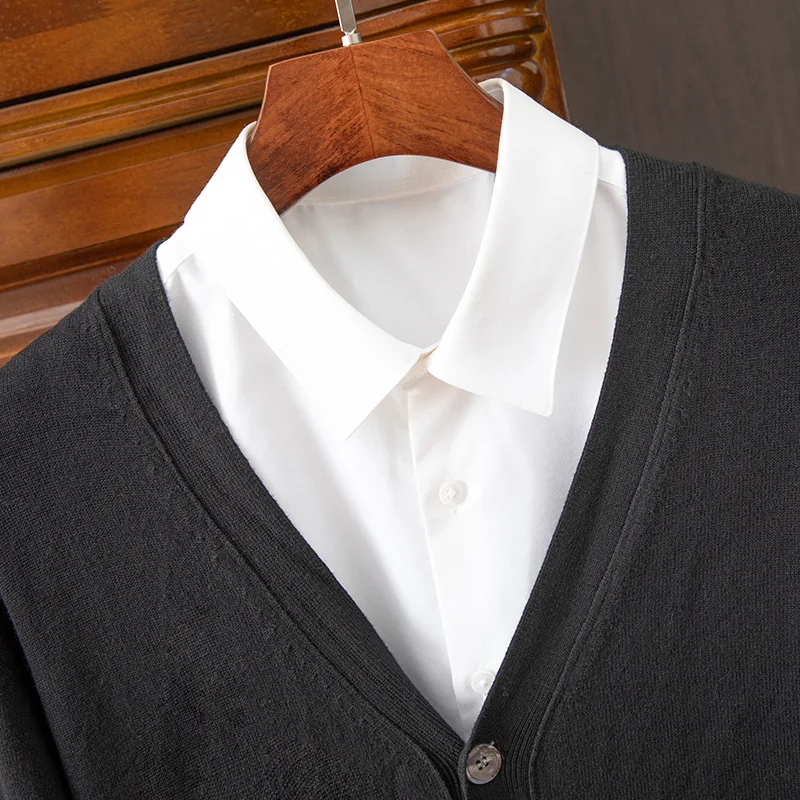
Physical Characteristics of Lightweight Cashmere
Lightweight cashmere presents a dramatically different sensory experience compared to its chunky counterpart, offering ethereal delicacy combined with surprising warmth and resilience.
Defining Features:
- Minimal Weight: Typically weighing between 150-250g/m² (approximately 4.5-7.5 oz/yd²), creating pieces that feel almost weightless
- Fine Gauge Construction: Usually knit at 12-18 gauge, creating smooth, refined fabrics with minimal visible texture
- Streamlined Plies: Predominantly constructed from 1-ply or 2-ply yarns for maximum fluidity
- Exceptional Drape: The fabric flows and moves with the body, creating elegant, close-fitting silhouettes
- Refined Surface: Creates a smooth, subtle finish that showcases cashmere’s natural luster
The hallmark of lightweight cashmere is its remarkable warmth-to-weight ratio. Despite its delicate appearance, fine cashmere provides impressive insulation through the natural crimped structure of the fibers, which trap warm air despite the thin fabric profile. This thermal efficiency makes lightweight cashmere particularly valuable for short sleeve cashmere sweaters and other transitional pieces.
When worn against the skin, lightweight cashmere creates an almost imperceptible embrace—present but never restrictive. The gentle weight and natural elasticity allow for comfortable, unrestricted movement while maintaining a refined appearance throughout the day.
The fluidity of lightweight cashmere makes it exceptionally versatile for layering. Fine-gauge pieces can be comfortably worn under jackets or blazers without adding bulk, while their natural temperature regulation prevents overheating. This quality makes styling lightweight cashmere cardigans particularly versatile across seasons.
Visually, lightweight cashmere offers subtle sophistication. Rather than commanding attention through texture, it creates elegant lines and refined drape that elevate even simple designs to luxury status. The smooth surface also provides an excellent canvas for rich, nuanced colors that showcase cashmere’s natural luster.
Direct Comparison: Chunky vs. Lightweight Cashmere
To help clarify the key differences between these two cashmere types, the following comparison examines their most important attributes side-by-side:
| Attribute | Chunky Cashmere | Lightweight Cashmere |
|---|---|---|
| Weight & Thickness | 300-600g/m² (9-18 oz/yd²) Substantial, noticeable presence | 150-250g/m² (4.5-7.5 oz/yd²) Delicate, almost weightless feel |
| Warmth & Insulation | Exceptional insulation for coldest conditions Creates significant heat retention | Surprisingly warm despite thin profile Better temperature regulation |
| Knit Structure | Low gauge (3-7) Visible stitches and texture | High gauge (12-18) Smooth, refined appearance |
| Drape & Feel | Structured, architectural Stands away from the body | Fluid, conforming Follows body contours |
| Seasonal Versatility | Excels in winter Too warm for transitional seasons | Year-round potential Excellent for layering across seasons |
| Typical Applications | Statement outerwear Chunky turtlenecks Cable knit sweaters | Fine pullovers Layering pieces Cardigans and wraps |
| Layering Potential | Functions best as outer layer Can overwhelm other pieces | Excellent base or middle layer Works under jackets or coats |
| Durability Factors | More substantial construction Can show wear at friction points | Requires careful handling More vulnerable to snags |
| Price Considerations | Higher material content Generally more expensive | Requires less material Often more accessible price point |
| Visual Impact | Bold, textural statements Dramatic silhouettes | Refined elegance Subtle sophistication |
The differences between brushed vs classic cashmere add another dimension to this comparison. Brushed finishes create a softer surface with slight texture, while classic finishes maintain cashmere’s natural smooth character.
When considering ultimate guide layering cashmere cardigans, weight becomes particularly important. Lightweight options excel in creating elegant layered looks without bulk, while chunky styles make stronger statements but require more thoughtful pairing with other garments.
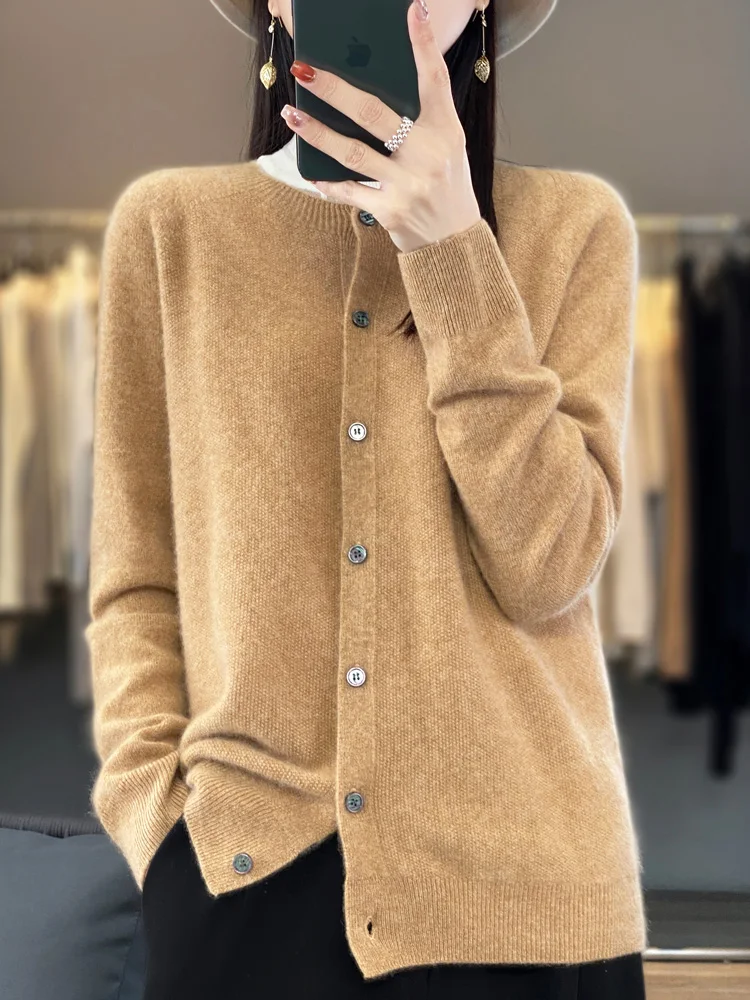
Seasonal Applications: When to Choose Each Type
Understanding the optimal seasonal applications for each cashmere weight helps maximize both comfort and investment value throughout the year.
Winter
Chunky cashmere truly shines during the coldest months. Its substantial weight and excellent insulation properties make it ideal for frigid temperatures. The textural interest of cable knits and ribbed patterns adds welcome dimension to winter wardrobes often dominated by practical but plain outerwear. Chunky turtlenecks and oversized cardigans provide both physical and psychological comfort during harsh winter conditions.
Lightweight cashmere still has winter applications, particularly as layering pieces under coats and jackets. Fine-gauge turtlenecks or long-sleeve pieces create excellent base layers that add warmth without bulk—perfect for office environments where temperature regulation between outdoors and heated interiors becomes challenging.
Spring/Fall
Transitional seasons showcase the versatility of cashmere transitional weather options. Lightweight cashmere truly excels here, offering perfect temperature regulation for unpredictable conditions. Fine cardigans can be easily added or removed as temperatures fluctuate throughout the day.
Chunky cashmere can still work in these seasons as an outer layer during cooler mornings or evenings, especially in open-front cardigan styles that can be removed as temperatures rise. The key is selecting pieces that can function as outer layers rather than mid-layers.
Summer
While cashmere is rarely associated with summer, lightweight options have surprising applications even in warmer months. Fine-gauge short-sleeve styles or open-weave pieces provide elegant options for cool summer evenings or heavily air-conditioned environments. The natural temperature-regulating properties of cashmere prevent overheating while still providing light insulation when needed.
Chunky cashmere generally becomes impractical during summer except in specific coastal environments with significant temperature drops after sunset.
Year-Round Considerations
When building a year-round cashmere outfit ideas collection, consider your local climate carefully. Those in moderate climates may find lightweight cashmere serves them year-round, while those in regions with dramatic seasonal variations will benefit from having both weights in their wardrobe.
Indoor environments also significantly impact cashmere choices. Office buildings, restaurants, and theaters often maintain cool temperatures regardless of season, making lightweight cashmere pieces valuable year-round additions to a thoughtful wardrobe.
Styling Guide: Creating Looks with Chunky Cashmere
Chunky cashmere pieces naturally become the focal point of any outfit due to their substantial texture and visual weight. This prominent role requires thoughtful styling to create balanced, flattering looks.
Proportion Play
The key to successful chunky cashmere styling lies in balancing proportions. When wearing oversized or substantial top pieces, pair them with slimmer bottoms to create visual harmony:
- Chunky turtlenecks or crewnecks balance beautifully with straight-leg jeans or slim trousers
- Oversized cardigans create striking silhouettes when paired with fitted skirts or tailored pants
- Styling cashmere cardigan versatile looks often involves creating contrast between the substantial knit and more streamlined accompanying pieces
Color Considerations
Chunky cashmere makes a strong textural statement, which influences color choices:
- Neutral tones (camel, gray, navy, cream) allow the texture to become the focus while maintaining versatility
- Rich, saturated colors create dramatic statement pieces that anchor a seasonal wardrobe
- Colorblocking with complementary tones can highlight the dimensional qualities of textured knits
Accessorizing
The substantial nature of chunky cashmere influences accessory choices:
- Minimize competing textures—smooth leather bags and boots complement rather than compete with textural knits
- Scale accessories appropriately—delicate jewelry can get lost against chunky backgrounds, while bold pieces maintain proportion
- Consider practical layering—chunky knits paired with scarves require thoughtful selection to avoid overwhelming the silhouette
For 15 stylish ways wear cashmere cardigans, chunky styles excel in creating relaxed yet luxurious looks for weekend brunches, casual gatherings, and outdoor activities where their substantial presence offers both style and practical warmth.
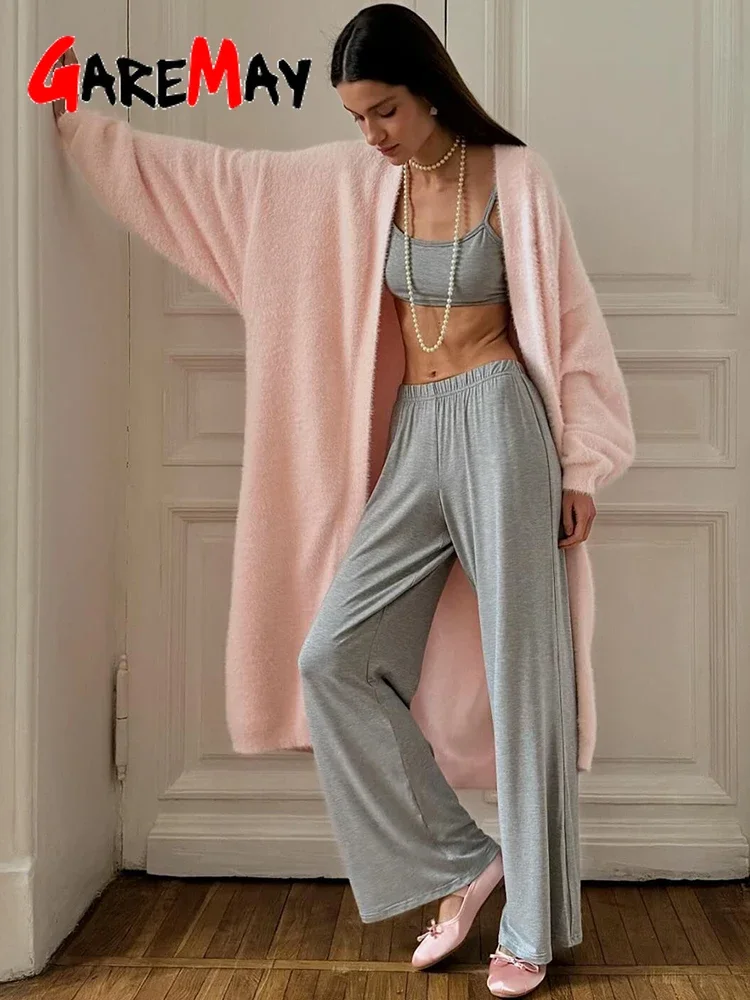
Styling Guide: Creating Looks with Lightweight Cashmere
Lightweight cashmere offers extraordinary versatility, functioning beautifully across casual, professional, and formal contexts with thoughtful styling.
Layering Mastery
The exceptional drape and minimal bulk of lightweight cashmere makes it the ideal candidate for sophisticated layering:
- Fine-gauge turtlenecks create perfect base layers under blazers or shirt jackets
- Lightweight cardigans function as elegant middle layers between shirts and outerwear
- Mastering wear long cashmere cardigans allows for creating fluid silhouettes with dramatic movement and elegant proportions
Professional Refinement
Lightweight cashmere excels in professional environments, offering polished comfort without sacrificing sophistication:
- Fine-gauge pullovers paired with tailored trousers create effortless elegance for office environments
- Lightweight cashmere shells under suits add luxurious texture while maintaining a streamlined silhouette
- Cardigans in refined neutral tones function as soft alternatives to structured blazers
Casual Luxury
For elevated casual looks, lightweight cashmere offers subtle sophistication:
- Simple crewneck styles paired with well-cut jeans create effortlessly refined weekend looks
- Lightweight wraps add elegant warmth to evening outfits without overwhelming delicate dresses
- Versatile outfit ideas cashmere cardigans in fine gauges work beautifully from coffee meetings to dinner engagements
Transition Pieces
The temperature-regulating properties of lightweight cashmere make it particularly valuable for transitional moments:
- Layer fine cardigans over summer dresses to extend their wearable season
- Keep lightweight cashmere wraps in office drawers or car compartments for unexpected temperature changes
- Create year-round capsule wardrobes centered around versatile, lightweight cashmere in neutral tones
The refined elegance of lightweight cashmere makes it particularly suitable for travel wardrobes. The minimal weight, resistance to wrinkling, and versatile styling options create perfect packable luxury for business trips or vacations.

Durability and Longevity Considerations
Understanding how different cashmere weights perform over time helps maximize the return on your investment in these luxury pieces.
Pilling Patterns
Both cashmere types eventually pill, but they follow different patterns:
Chunky Cashmere: Initial pilling often appears more obvious due to the textural background and typically occurs at friction points (underarms, sides). However, the substantial construction often means the pilling affects a smaller percentage of the overall fabric appearance.
Lightweight Cashmere: The smooth surface means pills can be more visible, but quality lightweight cashmere with longer fibers will resist excessive pilling. Preventing pilling cashmere garments is particularly important for maintaining the refined appearance of fine-gauge pieces.
Construction Impacts
The structural differences between the two types significantly affect longevity:
Chunky Cashmere: The multiple-ply construction and substantial fabric weight provide natural resilience against stretching and deformation. However, the weight can cause neck and shoulder areas to stretch over time if not properly supported during storage.
Lightweight Cashmere: The delicate construction requires more careful handling but often maintains its refined appearance longer with proper care. The lighter weight puts less strain on the garment structure during wear.
Quality Indicators
Regardless of weight, certain quality factors predict longevity in both cashmere types:
- Fiber Length: Longer fibers (36mm+) create stronger yarns less prone to breakage and pilling
- Knitting Tension: Even, tight knitting improves durability in both weights
- Finishing Quality: Properly finished edges and seams prevent unraveling
- Yarn Twist: Higher-twist yarns resist pilling better in both chunky and lightweight constructions
The concept of cost-per-wear becomes particularly relevant when considering are cashmere cardigans worth investment. Quality cashmere pieces, while initially more expensive, often provide better long-term value through superior durability, timeless design, and extended wearability compared to lower-quality alternatives.
Essential Care Guide for Both Cashmere Types
Proper care dramatically extends the life of cashmere garments, with slight variations in approach depending on whether you’re caring for chunky or lightweight pieces.
Washing Techniques
For both types, gentle hand washing yields the best results:
- Fill a basin with lukewarm water (never hot)
- Add a small amount of cashmere-specific wash or gentle shampoo
- Submerge the garment and gently squeeze the soapy water through (avoid rubbing or wringing)
- Rinse thoroughly with clean lukewarm water until no soap remains
- Press (don’t wring) excess water out between clean towels
Ultimate guide cashmere care washing provides detailed instructions for maintaining cashmere’s luxurious properties through proper cleaning techniques.
Drying and Blocking
Proper drying techniques preserve the shape and texture of both cashmere types:
Chunky Cashmere:
* Lay flat on a clean, dry towel away from direct heat and sunlight
* Reshape carefully to original dimensions while damp
* May require longer drying time due to substantial weight
* Rotate occasionally to ensure even drying
Lightweight Cashmere:
* Extremely delicate when wet—handle minimally
* Block to exact measurements on a flat surface
* Can be rolled in clean towels to remove excess moisture
* Dries more quickly than chunky styles
Storage Solutions
Proper storage is crucial for store cashmere properly ultimate guide to protect against moths and stretching:
- Clean thoroughly before storing for extended periods
- Use breathable cotton garment bags or acid-free tissue
- Store folded rather than hung to prevent stretching
- Include cedar blocks or lavender sachets as natural moth deterrents
- Ensure storage area remains cool and dry
Type-Specific Considerations
Chunky Cashmere:
* Support heavy pieces when carrying to prevent stretching
* Store with support under arms and shoulders
* May require more frequent reshaping after wear due to weight
Lightweight Cashmere:
* Protect from jewelry and rough surfaces that may cause snags
* Consider using garment bags during travel
* May benefit from occasional steaming rather than full washing
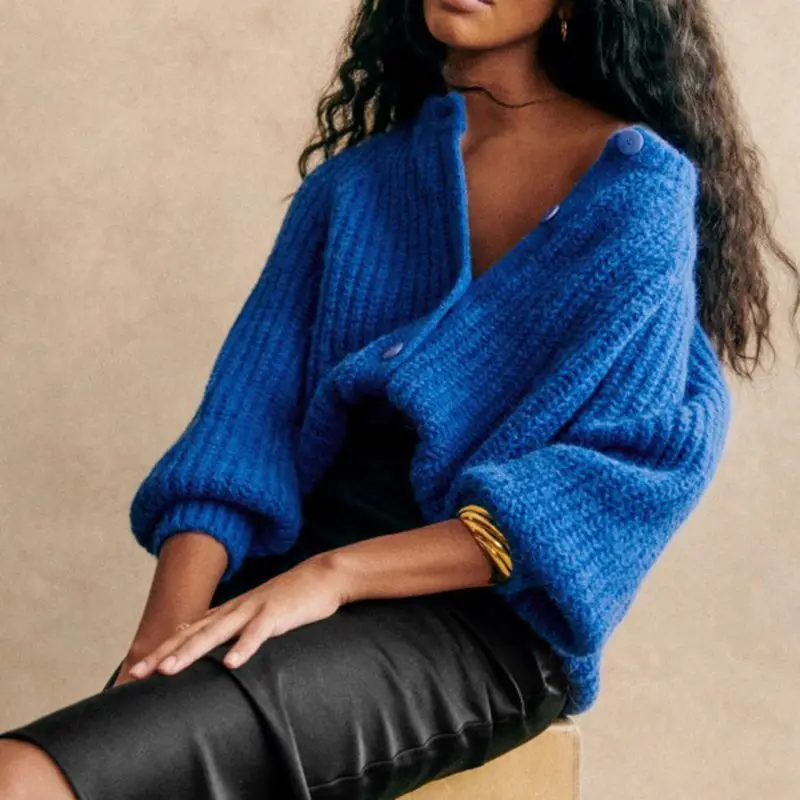
Investing Wisely: How to Choose the Right Cashmere Type for Your Needs
Making the optimal choice between chunky and lightweight cashmere depends on a thoughtful assessment of your lifestyle, climate, and wardrobe needs.
Climate Considerations
Your local weather patterns should significantly influence your cashmere selection:
- Cold, Harsh Winters: Prioritize chunky cashmere for its superior insulation
- Moderate Climates: Lightweight cashmere offers greater year-round utility
- Variable Conditions: Consider building a collection that includes both weights for maximum versatility
- Indoor Environments: Office workers in air-conditioned settings benefit from lightweight pieces regardless of outdoor climate
Lifestyle Alignment
Your daily activities and typical settings should inform your cashmere choices:
- Professional Settings: Lightweight cashmere typically integrates better with business attire
- Casual Environments: Both weights work well, with chunky styles creating more relaxed, textural looks
- Travel Frequency: Lightweight cashmere offers better packability for frequent travelers
- Outdoor Activities: Chunky cashmere provides better protection for outdoor enthusiasts
Wardrobe Integration
Consider how new cashmere pieces will complement your existing wardrobe:
- Layering Needs: If you frequently layer, lightweight cashmere offers better versatility
- Statement Pieces: Chunky cashmere creates more dramatic focal points in outfits
- Building cashmere capsule wardrobe: Start with versatile lightweight pieces in neutral colors, then add chunky statement pieces as your collection grows
- Existing Silhouettes: Choose weights that complement your preferred silhouettes and proportions
Personal Preferences
Beyond practical considerations, personal comfort and aesthetic preferences matter significantly:
- Tactile Sensitivity: Those who prefer lighter-weight fabrics against the skin may favor lightweight cashmere
- Temperature Regulation: Individuals who run hot may find lightweight options more comfortable even in winter
- Textural Preferences: Consider whether you’re drawn to smooth, refined surfaces or rich, dimensional textures
- Stylish casual cashmere cardigans can be found in both weights, so consider which aesthetic best reflects your personal style
Cashmere Wrap Sweaters, Women's Cashmere Pullovers
$75.89 Select options This product has multiple variants. The options may be chosen on the product pageCashmere Cable Knit Sweaters, Women's Cashmere Pullovers
Price range: $111.82 through $112.93 Select options This product has multiple variants. The options may be chosen on the product pageCropped Cashmere Sweaters, Women's Cashmere Pullovers
$155.77 Select options This product has multiple variants. The options may be chosen on the product page- Price range: $102.02 through $109.37 Select options This product has multiple variants. The options may be chosen on the product page
Oversized Cashmere Sweaters, Plus Size Cashmere Sweaters, Women's V-Neck Cashmere Sweaters
$136.87 Select options This product has multiple variants. The options may be chosen on the product pageStriped Cashmere Sweaters, Women's Cashmere Pullovers
$139.68 Select options This product has multiple variants. The options may be chosen on the product page
Beyond Basic Types: Special Cashmere Variations Worth Considering
While our comparison has focused on chunky and lightweight pure cashmere, several noteworthy variations offer unique benefits that combine elements from both categories.
Cashmere Blends
Strategic blending creates fabrics with distinctive properties:
- Silk-Cashmere: Adds luminosity and strength to lightweight cashmere while enhancing drape
- Cotton-Cashmere: Creates more breathable options for transitional seasons while reducing cost
- Wool-Cashmere: Cashmere wool cardigans offer enhanced durability while maintaining much of cashmere’s softness
Specialized Knit Structures
Innovative knitting techniques create unique options beyond basic chunky or lightweight classifications:
- Open-Weave Cashmere: Creates airy, breathable fabrics with visual interest while using substantial yarns
- Double-Faced Cashmere: Offers the weight and warmth of chunky cashmere with the refined appearance of lightweight styles
- Versatile cashmere cardigan styles often incorporate mixed-gauge techniques that combine different weights within single garments
Regional Variations
Different production regions create cashmere with distinct characteristics:
- Inner Mongolian Cashmere: Often considered the world’s finest, with exceptional softness and fiber length
- Scottish Cashmere: Renowned for exceptional knitting techniques that enhance durability
- Italian Cashmere: Famous for innovative treatments and blending that create unique textures and drape
These specialized variations expand the possibilities beyond the basic chunky versus lightweight binary, allowing for even more nuanced choices based on specific needs and preferences.
Is Cashmere Always Worth the Investment?
When considering the value proposition of cashmere, several factors help determine whether the investment aligns with your priorities and lifestyle.
Quality Comparison
Not all cashmere is created equal, and quality dramatically affects value:
- Premium cashmere from reputable sources like Estate Cloth maintains its beauty for years with proper care
- Lower-quality cashmere often pills excessively, loses shape, and fails to provide the signature softness that justifies the price
- The difference between high and low-quality cashmere becomes increasingly apparent after multiple wearings and washings
Environmental and Ethical Considerations
Beyond personal value, responsible consumers consider broader impacts:
- Sustainable cashmere production supports traditional herding communities
- Quality pieces that last for years create less environmental impact than frequently replaced lower-quality items
- Brands committed to ethical production often command higher prices that reflect fair labor practices
Investment Perspective
The concept of cost-per-wear helps evaluate the true value of quality cashmere:
- Premium cashmere cardigans typically maintain their beauty for 10+ years with proper care
- Timeless designs transcend seasonal trends, providing longer usable lifespans
- The emotional satisfaction of wearing exceptional materials adds intangible value to the investment
Alternative Considerations
Cashmere may not always be the optimal choice for every situation:
- For extremely rugged conditions, specialized performance fabrics may offer better durability
- Those with specific ethical concerns might prefer certain plant-based alternatives
- Budget constraints might make quality wool a better value proposition for certain applications
The investment in quality cashmere—whether chunky or lightweight—typically provides the greatest return when selecting pieces that:
1. Align with your actual lifestyle needs
2. Feature timeless designs that transcend trends
3. Come from reputable sources using premium materials
4. Receive proper care throughout their lifespan
Understanding mongolian scottish cashmere quality differences helps inform these investment decisions and ensures you select pieces that will truly deliver long-term value.
Frequently Asked Questions About Cashmere Weight and Types
Can lightweight cashmere be warm enough for winter?
Yes, despite its delicate appearance, quality lightweight cashmere provides remarkable insulation. The natural crimp of fine cashmere fibers traps warm air effectively, making even fine-gauge pieces surprisingly warm. For extreme cold, layering cropped cashmere sweaters and other lightweight pieces creates excellent insulation without bulk.
Does chunky cashmere always pill more than lightweight?
Not necessarily. Pilling primarily relates to fiber quality rather than weight. Premium chunky cashmere made from longer fibers (36mm+) may pill less than lower-quality lightweight cashmere with shorter fibers. However, chunky cashmere’s textural surface can sometimes make pills less noticeable than on smooth lightweight surfaces.
How can you tell high-quality cashmere from lower quality?
Quality indicators include: softness without excessive treatment; resilience when gently stretched; minimal initial shedding; tight, even knitting; and clear labeling regarding fiber grade, ply, and origin. Premium cashmere feels soft but not slippery (which often indicates chemical treatments), and has a subtle luster rather than artificial shine.
Is two-ply always better than one-ply cashmere?
Not always. While additional plies generally increase warmth and durability, high-quality single-ply cashmere made from superior long fibers can outperform lower-quality two-ply options. One-ply construction offers exceptional drape and lightness ideal for certain applications, while two-ply provides better structure and longevity for everyday wear.
How should cashmere feel when you first purchase it?
Quality cashmere should feel incredibly soft but not slippery, with a natural resilience that allows it to return to shape when stretched slightly. It should have consistent texture throughout with even knitting. New cashmere may shed slightly but shouldn’t leave excessive fibers on other clothing. The material should feel substantial for its weight, regardless of whether it’s chunky or lightweight.
Can cashmere be worn in warm weather?
Lightweight cashmere can be surprisingly comfortable in moderate warm weather due to its excellent temperature regulation. The finest-gauge cashmere pieces, particularly those incorporating open knit structures, provide sun protection while remaining breathable. For warm-weather options, look for eco-friendly cashmere fabric choices that include summer-weight constructions specifically designed for transitional seasons.
How does cashmere compare to other premium fibers?
Cashmere offers an unmatched combination of softness, warmth-to-weight ratio, and elegant drape. Compared to fine merino wool, cashmere provides similar warmth with significantly less weight and greater softness. Against silk, cashmere offers better insulation while silk provides more strength and sheen. Compared to alpaca, cashmere typically feels softer and lighter while alpaca often provides superior durability and water resistance.





